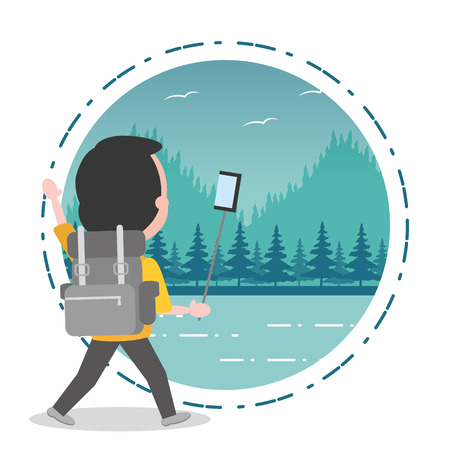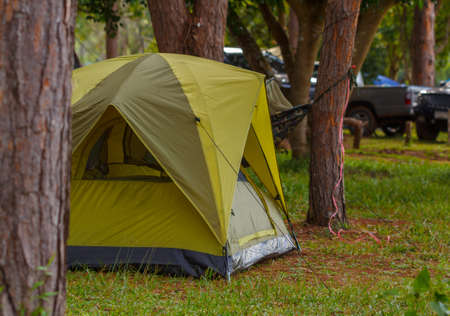1. Understanding Local Water Hazards
When camping near lakes, rivers, or streams, its important to know that not all water is created equal. Even if a lake looks calm on the surface or a river seems shallow, there can be hidden dangers that put children at risk. Before letting your kids near any natural body of water, take some time to learn about the specific hazards in the area.
Common Water Hazards Around Campgrounds
Each type of water source comes with its own set of risks. Heres a simple breakdown:
| Water Type | Potential Hazards |
|---|---|
| Lakes | Sudden drop-offs, hidden rocks, slippery banks, cold temperatures below the surface |
| Rivers | Strong currents, fast-moving water even if it looks slow, undercut banks, fallen trees or branches (strainers) |
| Streams | Flash flooding after rain, slippery rocks, sharp turns in the current, unexpected depth changes |
Current Strength and Flow Rates
One of the most dangerous elements in natural water is the current. Rivers and streams can have strong undercurrents that are hard to see but powerful enough to knock over a child—or even an adult. Just because the surface looks calm doesnt mean its safe underneath.
How to Check Current Safety:
- Ask local park rangers or campground hosts about recent weather and water conditions.
- Look for posted signs or warnings around swimming areas or trails.
- Toss a small stick into the water and watch how fast it moves to get a rough idea of current strength.
Hidden Debris Underwater
Trees, branches, fishing lines, and even broken glass can be just beneath the surface of lakes and rivers. These objects can trap feet or cause injuries. Always walk through shallow areas first before letting kids swim or play.
Sudden Depth Changes
Lakes often have steep drop-offs just a few feet from shore. Rivers can go from ankle-deep to waist-high in seconds due to uneven riverbeds. Teach your children never to run into water and always enter slowly—preferably with an adult nearby.
Tip:
If youre unfamiliar with the area, avoid letting kids swim unless theres a designated swimming zone monitored by lifeguards or clearly marked as safe.
Understanding these natural risks is the first step in keeping your kids safe while enjoying everything nature has to offer at the campground.
2. Setting Ground Rules for Water Play
When youre camping near lakes, rivers, or streams, its important to set clear ground rules for kids before any water play begins. Simple, easy-to-follow rules help keep everyone safe and give parents peace of mind. Whether youre at a national park or a local campsite, these guidelines can make all the difference.
Designate Specific Swimming Times
Choose specific times during the day when swimming is allowed. This helps avoid spontaneous dips that could be risky without supervision. Pick times when adults are available to watch closely, and make sure everyone knows the schedule.
Stay Within Sightlines
Always make sure kids stay in areas where an adult can see them clearly. Choose spots with good visibility and avoid places with thick vegetation, steep banks, or fast-moving water. Teach children that if they cant see you, you cant see them — and that means stop playing until theyre back in view.
Use the Buddy System
Never let kids go near water alone. The buddy system pairs up children so they’re always watching out for each other. Even strong swimmers benefit from having someone else nearby in case of an emergency.
Example Water Safety Rules for Your Family
| Rule | Why It Matters |
|---|---|
| Swim only during designated times | Ensures adult supervision is present at all times |
| Always stay within sight of an adult | Makes it easier to respond quickly in case of trouble |
| Never swim alone – use the buddy system | Adds a layer of safety and awareness among kids |
| No rough play near the water | Prevents accidents like slipping or falling in unexpectedly |
Tip:
Create a fun “Water Safety Pledge” that all kids agree to before your camping trip begins. You can even turn it into a family activity by letting them help come up with rules and decorating the pledge together.
By setting expectations early and making safety a team effort, youll help your kids build smart habits that last beyond just one camping trip.

3. Supervision and Lifeguard Presence
When it comes to water safety at campgrounds, nothing is more important than keeping a close eye on your kids—no matter how shallow the water is. Whether theyre splashing along the shoreline or wading in a few feet of water, accidents can happen in seconds. Thats why constant adult supervision is key.
Why Supervision Matters
Even if your child knows how to swim, that doesn’t mean they’re safe without an adult nearby. Natural bodies of water like lakes and rivers can have unexpected drop-offs, strong currents, or slippery rocks that can quickly lead to dangerous situations. Here’s a quick look at why supervision should never be skipped:
| Situation | Potential Risk | Why Adult Supervision Helps |
|---|---|---|
| Shallow Water Play | Slips, sudden deep spots | Adults can react fast if a child falls or panics |
| Floating Devices | Drifting away from shore | An adult can guide or pull them back safely |
| Canoe/Kayak Use | Tipping over, getting stuck | Supervising adults ensure proper use and emergency response |
Check for Lifeguard Presence
Before heading to the campground, find out if there are professional lifeguards on duty at the lake or river area. While not all campgrounds offer this service, its a huge plus if they do. Lifeguards are trained to spot dangers quickly and respond immediately in case of an emergency.
How to Find Out?
- Visit the campground’s official website for water safety information.
- Call ahead and ask about lifeguard availability and hours.
- Look for signs posted around swimming areas when you arrive.
If there are no lifeguards, it’s even more crucial that adults stay alert and near children whenever they’re in or around water. Always assign a “Water Watcher”—a responsible adult whose only job is to keep eyes on the kids while theyre playing near the lake or river.
4. Safety Gear Kids Should Always Wear
When youre camping near lakes, rivers, or any body of water, making sure your kids have the right safety gear is one of the most important things you can do. Accidents can happen quickly around water, but having the proper equipment can make all the difference.
U.S. Coast Guard-Approved Life Jackets
A life jacket is a must-have for every child near water—even if theyre just playing at the shoreline. Make sure to choose a life jacket that is approved by the U.S. Coast Guard. These are tested for safety and buoyancy and are designed to keep children afloat in emergencies.
Choosing the Right Fit
Life jackets come in different sizes based on weight and chest size. A poor fit can be dangerous, so here’s a quick guide:
| Childs Weight | Recommended Life Jacket Type | Fit Tips |
|---|---|---|
| Under 30 lbs | Infant Type II | Should include a head support and crotch strap |
| 30–50 lbs | Child Type III | Snug fit with all straps secured; test in shallow water first |
| 50–90 lbs | Youth Type III | Should not ride up when arms are raised overhead |
Water Shoes for Protection
Water shoes are another essential piece of gear when camping near lakes and rivers. They help protect little feet from sharp rocks, slippery surfaces, and even hot sand or rough terrain on the way to the water.
Why Water Shoes Matter
- Grip: Reduces slipping on wet docks or rocks.
- Protection: Shields feet from cuts, scrapes, or stings.
- Comfort: Makes walking on uneven ground easier for kids.
How to Ensure Proper Fit for All Ages
No matter what gear youre using, it needs to fit well to work properly. Heres how to check:
- Life Jackets: Lift the jacket by the shoulders—if it rises above the child’s chin or ears, its too big.
- Crotch Straps: Always use them for younger children to prevent slipping out of the jacket.
- Water Shoes: Choose snug but not tight shoes; avoid flip-flops as they offer little protection or grip.
The right gear can make water activities safer and more fun for everyone. Be sure to check sizing before your trip and test everything out beforehand so your kids are comfortable and protected at the campground.
5. Educating Kids About Water Safety
Teaching your kids about water safety is just as important as packing the right gear for your camping trip. When youre near lakes, rivers, or streams, kids need to understand that these natural bodies of water can be unpredictable and sometimes dangerous. Here are some simple and effective ways to help your children stay safe and confident around water.
Respecting Natural Water
Start by helping your kids develop a healthy respect for nature. Explain that while lakes and rivers can be fun, they’re not like swimming pools — they can have hidden dangers like slippery rocks, sudden drop-offs, or fast-moving currents.
- Set clear rules: No going near the water without an adult.
- Lead by example: Show them how to walk carefully near wet areas and always wear water shoes.
- Talk about wildlife: Help them understand that some animals or plants in the water might be harmful.
Recognizing Danger Signs
Kiddos may not recognize when water is unsafe, so it’s important to teach them what to look out for. Use real-life examples during your trip to point out these signs.
| Danger Sign | What Kids Should Know |
|---|---|
| Strong Currents | If the water looks fast or if sticks and leaves are moving quickly, stay away. |
| Muddy or Cloudy Water | You cant see where youre stepping — there could be holes or sharp objects. |
| No Lifeguards | This means extra caution is needed — never swim alone or without permission. |
| Slick Rocks or Slopes | If rocks look shiny or green, they’re probably slippery — don’t climb on them. |
What to Do in an Emergency
No one wants an accident, but being prepared can make all the difference. Teach your child what to do if something goes wrong near the water.
If They Fall In:
- “Float, dont fight”: Encourage them to stay calm, float on their back, and call for help.
- Avoid standing up in currents: It’s safer to go with the flow until reaching calmer water or shore.
If Someone Else Is in Trouble:
- “Reach or throw, don’t go”: They should find a stick or rope to help — never jump in after someone unless they’re trained.
- Scream for help: Get an adult’s attention immediately.
You can even turn this into a fun role-playing activity at camp! Practicing safety responses helps build confidence and makes it easier for kids to remember what to do if something happens. Making safety part of your outdoor adventure ensures everyone has a great time exploring the wild together!
6. Emergency Preparedness and First Aid
When camping near lakes, rivers, or any body of water, being prepared for emergencies is just as important as having fun. Kids can be curious and unpredictable around water, so having a solid plan in place can make all the difference in preventing accidents or responding quickly if something goes wrong.
Crafting a Water-Specific Emergency Plan
A good emergency plan should be easy to remember and tailored to your specific campsite and family needs. Here are some simple steps to follow:
- Know your location: Identify the nearest hospital or ranger station and save their contact info on your phone.
- Assign roles: Designate who will call for help, who will administer first aid, and who will watch the other kids.
- Create a “what-if” guide: Discuss scenarios like “What if someone falls in?” or “What if we lose sight of someone?”
- Practice drills: Just like fire drills at school, walking through your plan helps everyone stay calm during real emergencies.
Choosing a Well-Stocked First Aid Kit
Your regular camping first aid kit should be upgraded with items that specifically help in water-related situations. Heres a quick checklist of what you should include:
| Essential Item | Purpose |
|---|---|
| CPR mask or face shield | Allows safe rescue breathing without direct contact |
| Emergency blanket | Keeps a person warm after being pulled from cold water |
| Waterproof bandages | Treats cuts or scrapes sustained near water |
| Tweezers and antiseptic wipes | Cleans wounds from rocks or river debris |
| Whistle | Used to signal for help across the campground |
Learning CPR and Basic Water Rescue Skills
You don’t have to be a lifeguard to save a life—but knowing the basics of CPR and water rescue can make you a real hero in an emergency. Many community centers, YMCAs, or even online courses offer training thats perfect for parents and older kids. Here are key skills to focus on:
Top Skills to Learn:
- Child and adult CPR: Learn how to give chest compressions and rescue breaths properly.
- The “Reach or Throw, Don’t Go” rule: If someone’s in trouble in the water, use a stick or rope instead of jumping in yourself.
- Recognizing drowning signs: Unlike in movies, drowning is often silent. Look for bobbing, gasping, or stillness.
Tip:
Laminating a small CPR instruction card and keeping it inside your first aid kit can serve as a helpful refresher during high-stress moments.
With the right preparation, you can enjoy your time by the lake or river while keeping your kids safe. A little planning goes a long way when it comes to outdoor water safety!


